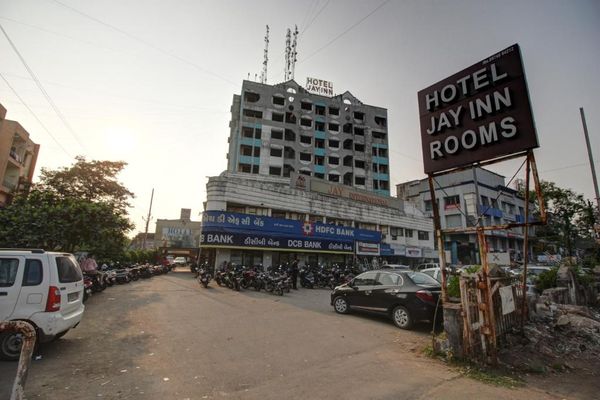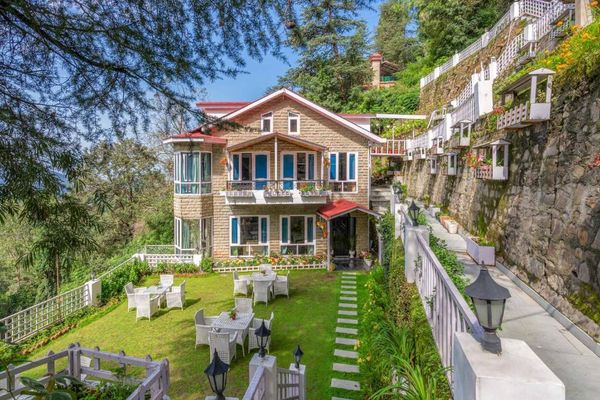Trekking Through Paradise: A Complete Guide to the Kashmir Great Lakes Adventure
 Palakshi Meharwal
02 May, 2025
11 mins read
303
Palakshi Meharwal
02 May, 2025
11 mins read
303

Tucked away in the northern expanse of India, where meadows meet snow-capped peaks and sapphire lakes mirror the skies, lies a trek that’s often spoken of with reverence and awe: the Kashmir Great Lakes (KGL) Trek. This high-altitude expedition offers more than just a physical challenge—it’s a poetic journey through some of the most pristine, untouched landscapes in the Himalayas.
Whether you're a seasoned mountaineer or an enthusiastic hiker ready to elevate your trekking game, this guide will provide an insightful, human-crafted look into one of India’s most breathtaking adventures.
Why Choose the Kashmir Great Lakes Trek?
The Kashmir Great Lakes Trek is not merely a walk through the mountains—it's a tapestry of natural wonders that unravels across approximately 70–75 kilometers of alpine beauty. Taking around 7 to 9 days to complete, the trail leads you through seven major lakes, each with its own distinct character.
What makes the KGL trek especially captivating is its variety. From pine-covered valleys and flower-strewn meadows to high mountain passes and glacier-fed rivers, the landscape changes almost every day. The visual drama keeps the journey fresh and exhilarating throughout.
Best Time to Visit: Seasons and Serenity
The optimal time to embark on this trek is between early July and mid-September. During this window, the snow has melted enough to make the passes accessible, and the meadows are in full bloom. Expect daytime temperatures ranging from 15°C to 20°C, while nights can dip close to freezing at higher camps.
Avoid planning this trek outside this narrow window—winters here are unforgiving, and even early June can find parts of the trail under heavy snow.
The Route: Day-by-Day Breakdown
Here’s a general itinerary followed by most trekking operators, starting from Sonamarg and ending in Naranag:
Sonamarg to Nichnai
Your journey begins from the picturesque meadow of Sonamarg. A moderate ascent leads through pine forests and open grasslands before reaching Nichnai, your first camp. Expect a 9–10 km trek taking about 6–7 hours.
Nichnai to Vishansar Lake via Nichnai Pass
This day involves crossing the Nichnai Pass at around 13,000 ft. After the pass, the trail descends into a wide valley leading to Vishansar Lake—a surreal sight surrounded by rugged cliffs.
Acclimatization Day at Vishansar
Many trekkers take an extra day here to acclimate to the altitude. Explore the twin lake Krishansar nearby or simply rest and soak in the serene surroundings.
Vishansar to Gadsar via Gadsar Pass
The most challenging day of the trek, you’ll climb to the highest point—Gadsar Pass at approximately 13,800 ft. The effort is worth the view: alpine lakes, flower-covered ridges, and the remote beauty of Gadsar Lake await.
Gadsar to Satsar
A gentler day through rolling meadows and occasional army checkpoints. Satsar comprises a group of seven small interconnected lakes—more tranquil than dramatic.
Satsar to Gangbal via Zaj Pass
Another demanding day involving the crossing of Zaj Pass. The descent brings you face to face with the twin lakes of Gangbal and Nundkol, framed by the towering Mount Harmukh.
Gangbal to Naranag
The final descent is steep and passes through dense pine forests. The village of Naranag marks the end of your journey—time to celebrate, reflect, and rest your legs.
Difficulty Level and Fitness Requirements
The KGL trek is classified as moderate to difficult. While it doesn't require technical mountaineering skills, good cardiovascular endurance and physical fitness are crucial. Trekkers should be able to walk 10–12 km daily over varied terrain with a loaded backpack.
Basic altitude acclimatization knowledge, including recognizing symptoms of Acute Mountain Sickness (AMS), is essential. Most trek leaders carry oxygen cylinders and pulse oximeters as a precaution.
Essential Packing List
A successful KGL trek begins with smart packing. Here are key essentials:
- High-quality trekking boots (waterproof and ankle-high)
- Thermal base layers and quick-dry hiking clothes
- A down jacket and rainproof outer shell
- Gloves, woolen socks, beanie, and sun hat
- Sleeping bag (if not provided by the operator)
- Sunscreen (SPF 50+), lip balm, and polarized sunglasses
- Water purification tablets or filter
- First-aid kit including altitude sickness medication
Always opt for layered clothing—it allows you to adapt quickly to temperature fluctuations.
Permits, Guides, and Logistics
As the trek passes near the Line of Control (LoC), foreign nationals must secure special permits in advance. Indian nationals require identification but typically don’t need special authorization. However, all trekkers must register with the local army posts en route.
Hiring a certified trekking company is strongly recommended. They provide logistical support, experienced guides, mule transport, and emergency management—vital components for a successful high-altitude trek.
Some reliable Indian operators include Indiahikes, Trek The Himalayas, and Bikat Adventures. Make sure your operator practices eco-friendly trekking ethics.
The Ethical Trekker’s Checklist
With increasing footfall comes the responsibility of protecting the fragile alpine ecosystem. Here’s how to tread lightly:
- Carry all your non-biodegradable waste back to the base.
- Avoid using soaps or detergents in lakes and streams.
- Stick to designated trails to prevent meadow erosion.
- Support local communities—buy local produce or handicrafts where available.
By trekking responsibly, you ensure that the next adventurer will find the same beauty you did.
What Sets the Kashmir Great Lakes Apart?
While India is dotted with spectacular treks, the KGL trail holds a unique poetic charm. It’s not just about summiting a peak or checking off a physical challenge—it’s about immersion. Every turn of the trail offers a fresh perspective on nature’s artistry: clouds dancing across mirror-like lakes, herds of sheep grazing lazily in wildflower meadows, and sunlight bouncing off snow-dusted ridgelines.
Unlike other trails where the landscape remains static, the Kashmir Great Lakes Trek is dynamic—each day introduces new colors, shapes, and moods. This constant transformation is what turns a hike into a soul-stirring journey.
Final Thoughts: Is It Worth It?
Absolutely. But more importantly, it’s a reminder of the stillness and majesty that our planet holds. While the logistics can be complex and the terrain demanding, the payoff is a treasure trove of memories that linger long after you’ve returned to the chaos of daily life.
Written By:
Palakshi Meharwal



Hotels at your convenience
Now choose your stay according to your preference. From finding a place for your dream destination or a mere weekend getaway to business accommodations or brief stay, we have got you covered. Explore hotels as per your mood.


